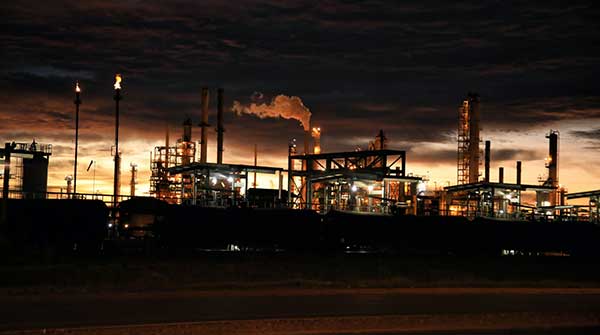International Energy Agency’s net zero scenario unrealistic
 The International Energy Agency (IEA) has updated its net zero scenario, pushing governments to implement more aggressive climate policies on the energy industry.
The International Energy Agency (IEA) has updated its net zero scenario, pushing governments to implement more aggressive climate policies on the energy industry.
The IEA itself acknowledges the scenario is “a pathway, but not the only one” for the energy sector to reduce emissions to net zero by 2050.
The agency acknowledges the world is not on this trajectory, but the Government of Canada uses the net zero scenario as the basis for policies like its proposed oil and gas emissions cap, which will hurt Canadians without environmental gain.
“We’re the fourth-largest oil-producing country, and we’re the only ones that are saying oil and gas is not here to stay. That’s a huge roadblock for all of us,” Gurpreet Lail, CEO of Enserva, the national trade organization representing energy service and supply companies, told the Globe and Mail during the World Petroleum Congress last week.
 Photo by Robin Sommer |
| Related Stories |
| Industry titans question IEA’s forecasting credibility
|
| Is CCS worth the price tag?
|
| Experts warn of US$100 per barrel oil by year-end
|
Canada can lead the world with reliable, affordable energy supply and clean technology as countries work to reduce emissions. But the sector needs to be allowed to thrive rather than being phased out while it is needed.
Here are the facts.
Fact: The IEA net-zero scenario is not a forecast
The IEA’s updated net-zero scenario envisions the world not needing new coal, oil and natural gas projects. By 2030, it imagines world oil demand will drop by 23 percent, natural gas demand by 18 percent, and coal demand by 44 percent.
It’s difficult to see how this could actually happen, given that, even with accelerating investment in low-carbon energy resources, the world’s consumption of oil, gas and coal is as high or higher than it has ever been. And rising.
The IEA reports both oil and coal demand are at record levels. The agency itself projects the world’s total energy consumption – which increased by 15 percent over the last decade – will increase by a further 24 percent by 2050.
On the world’s current trajectory, the IEA says oil, gas and coal will still account for 62 percent of world energy supply in 2050, compared to 78 percent in 2021.
“There’s no evidence that oil demand is going to peak any time soon,” Arjun Murti, former partner with Goldman Sachs, said at the recent Global Business Forum in Banff. “Oil is not in its sunset phase.”
Fact: The IEA net-zero scenario is unrealistic
The IEA’s net zero scenario includes components that are unrealistic.
For example, it says electricity transmission and distribution grids need to expand by around two million kilometres each year to 2030. But it also acknowledges that building these grids can take more than a decade, putting that scale and timeline already out of reach.
The net-zero scenario also hinges on a “unified effort in which governments put tensions aside and find ways to work together.” But the IEA also acknowledges the world today is in “a complex and low-trust geopolitical environment.”
For example, according to Reuters News, Russia is trying to boost trade with Asia as economic ties with the West shrivel over Moscow’s actions in Ukraine. In just one example, state-owned Gazprom plans to start gas deliveries to China through the Power of Siberia pipeline in 2025 and expand that service in 2030 with Power of Siberia-2.
Russia’s invasion of Ukraine underscores a global shift away from the ideals of globalization, where the global economy benefits all, leading energy analyst and Pulitzer Prize-winning author Daniel Yergin said on a recent ARC Energy Ideas podcast.
“The era of globalization was what I call the WTO consensus: we’re all in this global economy together. In China, hundreds of millions of people come out of poverty. India enters the global economy, standards of living go up, and you get really impressive economic performance,” Yergin said. “Well, that era is ending, and it’s heading pretty fast now as we move into this new era of great power competition, which hopefully does not become great power confrontation.”
Energy is at the heart of the “new map,” as Yergin calls it.
Responsibly produced, reliable energy from Canada can benefit world energy security while helping reduce emissions. That is why it is essential the sector not be phased out through government policy.
Fact: Canadian energy and clean technology can help reduce world emissions
One of the fastest and most effective ways to reduce emissions is to switch from coal-fired power to power generated from natural gas, traded globally as LNG.
Consider that between 2005 and 2019, emissions from the U.S. power sector dropped by 32 percent because of coal-to-gas switching, according to the U.S. Energy Information Administration.
Natural gas from the LNG Canada project alone could reduce emissions in Asia by up to 90 million tonnes annually, or the equivalent of shutting down up to 60 Asian coal plants, the project says.
That’s a reduction of more than the entire emissions of the province of British Columbia, which were 64 million tonnes in 2022.
Expanding Canada’s LNG exports to Asia could reduce emissions by 188 million tonnes per year, or the annual equivalent of taking all internal combustion engine vehicles off Canadian roads, according to a 2022 study by Wood Mackenzie.
One of the reasons LNG from Canada has a lower emissions intensity than LNG from other jurisdictions is the success producers have seen in reducing methane emissions. It’s an opportunity for technology exports.
The IEA views cutting methane emissions from oil and gas as critical to achieving climate targets.
The latest data shows that oil and gas producers in Alberta decreased methane emissions by 44 percent between 2014 and 2021, a 10 percent drop from 2020. The sector is expected to surpass the target of reducing methane emissions by 45 percent by 2025.
“I don’t know of any other jurisdiction that is as far forward in terms of its methane management as Canada,” says Allan Fogwill, chief operating officer of Petroleum Technology Alliance Canada. “There’s nothing to suggest we couldn’t have similar impacts in the United States, the Middle East, or former Soviet countries that also are involved in oil and natural gas production.”
Fact: Canada’s carbon capture and storage leadership can benefit the world
The IEA says “rapid progress” is required to deploy more carbon capture, utilization and storage (CCUS) projects to reduce emissions.
This is another area where Canada’s energy sector can take the lead.
Since 2000, CCS projects in Saskatchewan and Alberta have removed more than 47 million tonnes of emissions, or the equivalent of taking more than 10 million cars off the road. This work has helped inform the development of major CCS projects globally, including Northern Lights in Norway.
Canada has five of the world’s 30 commercial CCS facilities, accounting for about 15 percent of global CCS capacity, even though Canada generates less than two percent of global CO2 emissions, according to the Global CCS Knowledge Centre.
Among CCS projects under development in Canada is one of the largest in the world, proposed by the Pathways Alliance of oil sands producers.
The first phase of the Pathways CCS project will connect 14 oil sands facilities to a CO2 storage hub in northern Alberta. The target is to reduce emissions from operations by 22 megatonnes by 2030 on the way to net zero in 2050.
Fact: Oil and gas are still needed in IEA net-zero scenario
Even in the IEA’s net-zero scenario, in 2050 about 14 percent of world energy needs will still be supplied by oil and gas.
This includes non-combustion uses like petrochemical feedstock and asphalt, which crude from Canada’s oil sands is particularly well suited to supply. Researchers with Queen’s University recently found that asphalt from Alberta’s oil sands can extend pavement lifespan by 30 to 50 percent.
The world needs more Canadian oil and gas, not less.
Deborah Jaremko is director of content for the Canadian Energy Centre, a Troy Media Editorial Content Provider Partner.
For interview requests, click here.
The opinions expressed by our columnists and contributors are theirs alone and do not inherently or expressly reflect the views of our publication.
© Troy Media
Troy Media is an editorial content provider to media outlets and its own hosted community news outlets across Canada.

